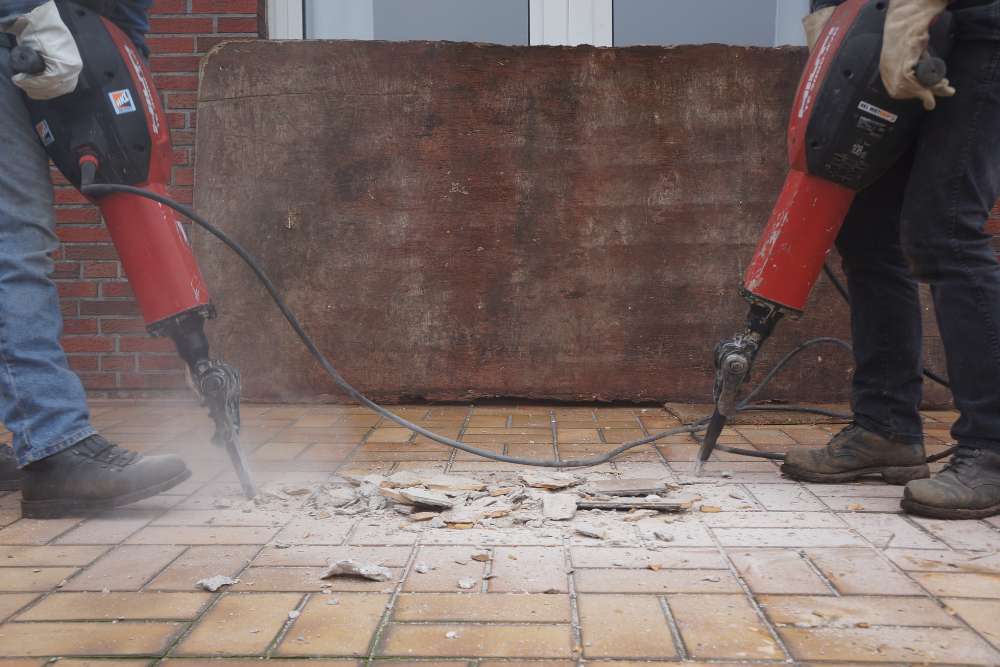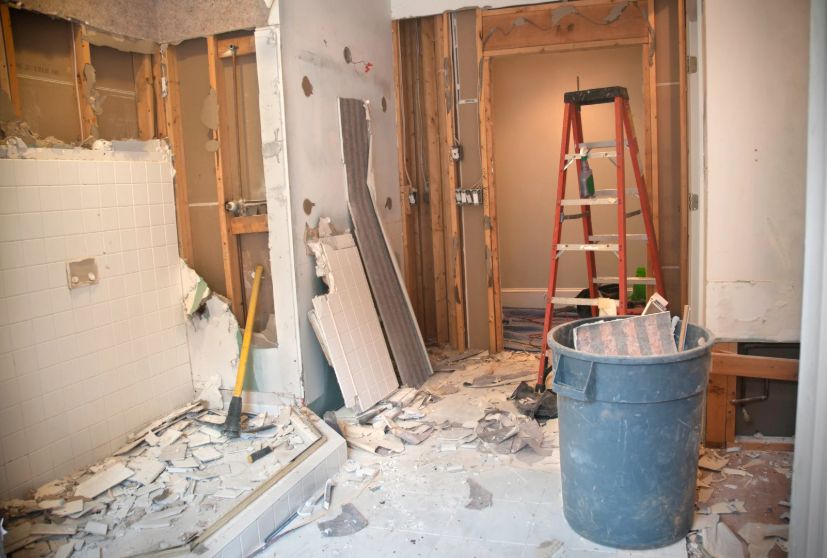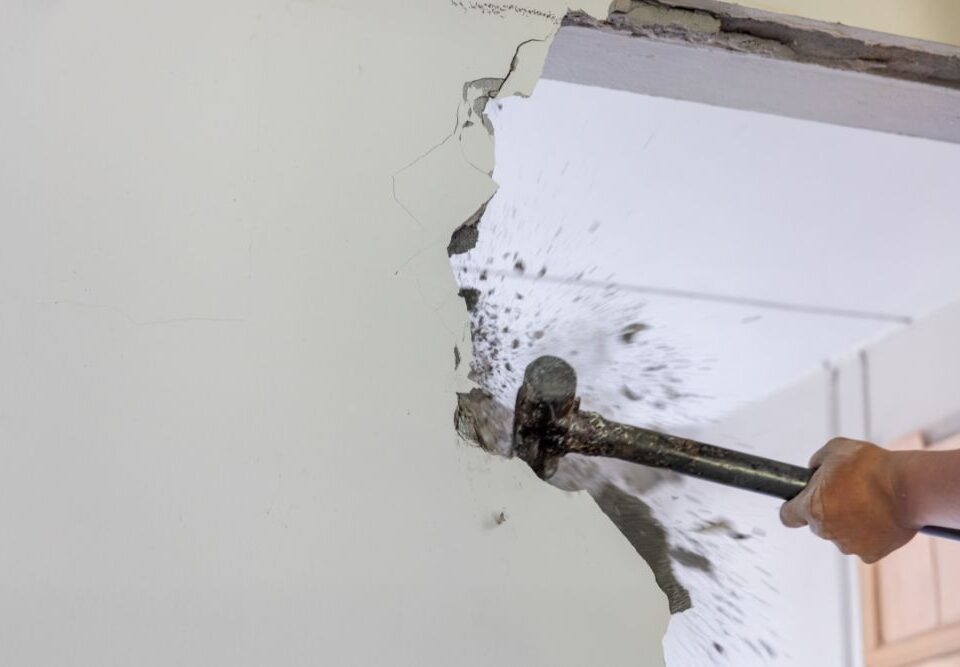
What to Do with Your Old Shed After Demolition
September 10, 2025
What’s Involved in Kitchen Demolition?
September 10, 2025Tips for Concrete Removal in Busy Neighborhoods
Concrete removal might sound straightforward, but in practice, it’s anything but simple—especially when you live in a busy neighborhood. From driveways to patios and sidewalks, concrete demolition produces noise, dust, and a surprising amount of debris that can affect not only your property but also the surrounding homes. In densely populated areas, these challenges are magnified, requiring careful planning and respectful execution. Without proper techniques and strategies, the project can quickly turn into a disruptive and stressful experience for both homeowners and their neighbors. Knowing how to approach concrete removal the right way keeps the process efficient while maintaining good community relations.
Planning ahead to minimize disruption
In busy neighborhoods, planning is the most important step in concrete removal. Homeowners must consider not only their own timeline but also how the project might impact neighbors. Choosing the right time of day to begin work can help reduce noise complaints. Early mornings or late evenings should usually be avoided, with mid-morning and afternoon hours being the most considerate. A quick conversation with neighbors before starting can also help set expectations and avoid unnecessary conflicts.
Planning also includes securing permits if the concrete removal involves sidewalks, driveways, or other areas that connect to public property. Local regulations may dictate how and when the work can be done, especially in high-traffic zones. By anticipating these details, homeowners can avoid fines and delays. Thoughtful planning lays the groundwork for a smoother project, making the demolition process less disruptive for everyone in the neighborhood.
Using the right equipment for concrete removal
Concrete is a tough material, and the tools used to break it apart make a significant difference in both speed and efficiency. In busy neighborhoods, where noise and time are critical factors, the right equipment becomes even more important. Heavy-duty tools like jackhammers, saws, and power drills can break concrete effectively, but choosing tools suited to the thickness and reinforcement of the material helps limit unnecessary noise and dust.
Professional-grade equipment often works faster, meaning less disruption for neighbors. Smaller residential projects may require only hand tools for lighter concrete, while thicker slabs benefit from industrial machinery. Renting the right equipment or hiring professionals with advanced tools ensures that the job is completed more quickly and with fewer setbacks. Using appropriate equipment reduces both stress and inconvenience, keeping the project on track without overwhelming the community around you.

Managing dust control during removal
Concrete removal generates a large amount of dust, which can travel quickly and settle on cars, porches, and nearby properties. In busy neighborhoods, dust management becomes essential for maintaining good relationships with neighbors. One of the most effective methods is wetting the concrete with water before and during removal. This technique helps keep airborne particles to a minimum and reduces cleanup afterward.
Plastic sheeting or temporary barriers can also be used to shield sensitive areas like garden beds or driveways from dust contamination. It’s not just about appearances—airborne concrete dust can be irritating to breathe, making it important for health and safety reasons as well. Taking proactive steps to control dust demonstrates respect for your neighbors and shows that you’re committed to completing the project responsibly. Dust control is one small action that goes a long way in reducing disruption.
Coordinating concrete hauling and disposal
Breaking up concrete is only half the job; hauling it away is the other major challenge. In a busy neighborhood, large piles of debris can become an eyesore or even a hazard if left unattended. Coordinating timely hauling and disposal ensures that the worksite stays clean and manageable. Having dumpsters or hauling services scheduled in advance prevents concrete from accumulating and blocking pathways or driveways.
Disposal regulations vary by location, and not all facilities accept large amounts of concrete. Some recycling centers can repurpose old concrete for future construction use, making eco-friendly disposal a viable option. Coordinating this step avoids last-minute scrambling and helps maintain a clean, organized space. When handled efficiently, hauling and disposal make the entire project smoother and prevent unnecessary friction with neighbors who share close quarters.
Timing the project in busy neighborhoods
Timing plays a critical role in any demolition project, but in a crowded neighborhood, it becomes even more sensitive. Choosing appropriate working hours helps minimize conflicts with neighbors’ daily routines. For instance, tackling noisy demolition during school drop-off times or early weekend mornings may create unnecessary tension. Midday scheduling tends to work best, as many people are at work or away from home during those hours.
The time of year can also influence the project’s impact. Summer months often bring more foot traffic and outdoor activity, which means demolition projects can disrupt more than just nearby homes. Cooler months might be less invasive for neighbors spending less time outside. Thoughtful timing reduces disruptions while keeping the project on track. Respecting the community’s rhythm makes the work feel less intrusive and allows homeowners to complete the task with fewer complaints.
Considering professional concrete removal services
While some homeowners may attempt to handle concrete removal on their own, hiring professional services often proves to be the smarter choice in busy neighborhoods. Professionals bring not only the right tools and expertise but also the experience to work efficiently while minimizing disruption. They are also familiar with local disposal regulations, saving homeowners the hassle of figuring out where and how to dispose of the debris properly.
In addition, professionals can often complete the work more quickly than DIY attempts, which means less time spent generating noise and dust in the neighborhood. Their ability to plan, execute, and clean up with precision makes them particularly valuable in densely populated areas where space and patience are limited. Hiring professionals isn’t just about convenience—it’s about reducing the overall footprint of the project and ensuring it is done safely and effectively.
Safety precautions during concrete demolition
Safety is paramount when removing concrete, especially in environments where neighbors and pedestrians may be close by. Proper barriers and warning signs should be in place to keep passersby out of the demolition zone. Flying debris, sharp edges, and heavy equipment can all present hazards if safety measures aren’t followed.
Wearing protective gear such as gloves, goggles, and sturdy footwear is essential for anyone directly involved in the project. In addition, tools and debris should be handled carefully to prevent accidents. Keeping the site organized reduces the risk of tripping or injury. Safety precautions aren’t just about protecting workers; they also help maintain peace of mind for neighbors who may be concerned about their children or pets being near the project. A visible commitment to safety builds trust and keeps the community secure.
Communicating with neighbors before starting
In tight-knit or busy neighborhoods, communication is as important as the demolition itself. Letting neighbors know when and how the work will take place gives them the chance to prepare. Simple gestures like a quick note, an email, or a friendly conversation can prevent misunderstandings and reduce frustration. Transparency shows respect and often leads to more patience and understanding from those around you.
Communication also opens the door for collaboration. A neighbor may need access to their driveway at certain times, or they may have specific concerns about noise. Addressing these details beforehand prevents problems later. In many cases, neighbors appreciate the courtesy and are more accommodating when they know what to expect. Good communication smooths out the entire process and reinforces the idea that the project is being carried out with consideration for the community.
Handling hidden obstacles during removal
Concrete demolition often comes with surprises hidden beneath the surface. Reinforcement bars, old pipes, or utility lines may complicate the process. In busy neighborhoods, where underground utilities are common, encountering these obstacles requires caution. Hitting an unexpected water line or electrical conduit could disrupt service not only to your home but to surrounding houses as well.
Before beginning, it’s wise to contact utility companies to identify the location of underground lines. This precaution minimizes the risk of damaging essential infrastructure. If hidden obstacles are encountered, having a plan in place ensures that the project doesn’t come to a halt. A careful and methodical approach to handling surprises helps maintain progress while avoiding dangerous or costly mistakes. By preparing for the unexpected, homeowners can navigate these challenges with minimal impact on their neighborhood.
Recycling concrete for eco-friendly results
Rather than hauling broken concrete directly to the landfill, many homeowners are turning toward recycling as an eco-friendly alternative. Concrete can be crushed and reused for new construction projects, roadbeds, or landscaping material. Recycling not only reduces environmental impact but also cuts down on disposal costs.
In busy neighborhoods, promoting eco-friendly practices is often appreciated by the community. Neighbors see the effort to minimize waste, which can create a sense of shared responsibility for the environment. Partnering with a recycling facility or hiring junk removal services that prioritize sustainable disposal makes this option both practical and rewarding. Recycling transforms what might seem like useless debris into valuable material, making the process more efficient and environmentally conscious.
Conclusion
Concrete removal in busy neighborhoods requires a balance between efficiency, safety, and community consideration. From planning ahead and controlling dust to coordinating disposal and recycling, every step plays a role in minimizing disruption. Communication with neighbors, proper safety precautions, and professional expertise can make all the difference in how smoothly the project unfolds. By respecting the shared space and planning thoughtfully, homeowners can complete their demolition work while keeping their neighborhood comfortable and safe.
For residents in Santa Rosa, CA, North Bay Junk Removal offers dependable junk removal services designed to simplify concrete hauling and disposal. Their experienced team ensures that debris is managed quickly, safely, and responsibly, allowing projects to move forward with less stress. Whether dealing with broken slabs, old patios, or large driveways, they provide solutions that respect both the homeowner’s needs and the community’s comfort. Call 707-478-6817 today to schedule professional junk removal and keep your neighborhood clean during your project.




